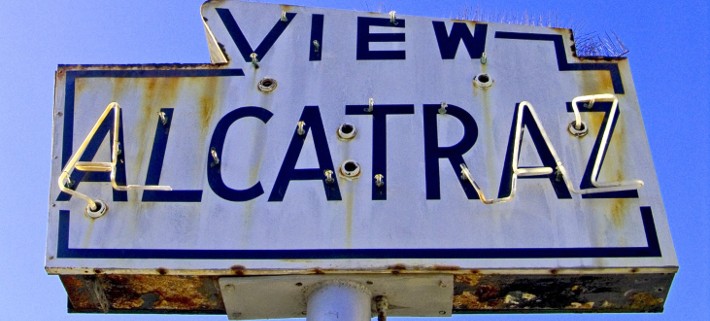5 Things to Know about Temporary Nursing Jobs with the California Department of Corrections
The California Department of Corrections and Rehabilitation (CDCR) employs over 7,000 healthcare professionals. There are over 140,000 inmates across 33 prisons throughout the state. The scope of the operation and the often remote locations of the correctional facilities necessitate the utilization of supplemental healthcare staff. The CDCR utilizes supplemental healthcare staff of all types, from CNAs to Physicians. Knowing the business side of the arrangement is greatly beneficial for healthcare professionals interested in these opportunities.
The Relationship Between California Correctional Healthcare Services and Healthcare Staffing Agencies
The State of California utilizes a competitive bidding system for its supplemental staffing needs. Under this system, the state issues a Request For Proposal (RFP) which is a solicitation to potential suppliers to submit bids for supplying supplemental staff. The suppliers, healthcare staffing agencies, submit proposals which contain details regarding their experience providing healthcare staffing services and a bid for the hourly bill rate to be charged for their supplemental staffs’ time at each facility.
The state reviews the proposals and awards contracts to a number of suppliers based on cost and the suppliers’ history of successfully providing supplemental healthcare staff. The state then creates a “bid matrix” which identifies the selected suppliers and ranks them from lowest to highest cost. To the best of my knowledge, the most recent Request for Proposal was completed sometime in the middle of 2010 at which time a new contract was initiated between CDCR and the selected healthcare staffing agencies.
General Rules for Nurses Working Temporary Jobs at CDCR
There were two significant changes initiated as part of the new contract. First, supplemental healthcare staff are allowed to work a maximum of 975 hours in a fiscal year. The fiscal year runs from July 1st to June 30th. This equates to approximately 24 weeks at 40 hours per week, which is just shy of 6 months. This is a big change from the past when it was not uncommon for healthcare professionals to maintain full-time supplemental status with CDCR for years on end.
Second, CDCR initiated strict enforcement of the competitive bidding rules. Specifically, CDCR requires its institutions to adhere to the bid matrix when seeking to fill their supplemental staffing needs. As a result, the institutions are required to begin their search with the lowest bidders first, and work their way through the list from lowest to highest bidder in an effort to achieve the lowest possible cost for the state.
While this rule was in effect in the past, it was not strictly enforced. As a result, there was no uniformity to the process which the institutions utilized in filling their supplemental staffing needs. Some institutions sent a fax to every staffing agency on the list and took candidates on a first-come-first-serve basis. Others tended to favor particular staffing agencies based on any number of factors. And some followed the rules as intended.
Advice for Landing a Temporary Nursing Job with California Department of Corrections
What does all this mean for the healthcare professional? My experience indicates that the overwhelming majority of CDCR’s supplemental openings are filled by the top 10 bidders on the bid matrix. Fortunately, the bid matrix is made public and I have provided instructions at the end of this article on how to view these documents. This way, you can see who the top bidders are for each correctional facility. You’ll also be able to see the bill rates which will strengthen your negotiating position.
If you’re interested in these opportunities, then I recommend contacting the agencies beginning with the lowest bidder and working your way up. You can ask them how many supplemental healthcare workers they have working at the facilities you’re interested in. You can also ask how often they receive requests for staff from the facilities you’re interested in. Your goal is to determine the agency with the highest bill rate that is also getting a steady stream of openings. The logic is that the higher the bill rate, the higher your pay rate may be. You’ll also have to ask each agency about their pay rates to be sure because a higher bill rate doesn’t always equal a higher pay rate.
Unfortunately, strict adherence to the bid matrix has resulted in lower pay for these positions. You’ll notice that many of the top bidders have what I consider to be extremely low bill rates. For example, there are bill rates for Registered Nurses that are less than $47 per hour. This translates into a fairly low wage relative to prevailing Registered Nursing wages in the state of California.
Nurses Working as 1099 Independent Contractors with CDCR
My experience indicates that several of the lowest bidding agencies treat their supplemental healthcare staff as 1099 – Independent Contractors. In my opinion, this is a great disservice to both the State of California and the healthcare professionals. It may open the State of California to the risk of liability. California is adamant that the healthcare staffing agencies are liable in the event that one of its healthcare professionals is injured on the job or injures a patient in the course of working.
This is very shaky ground for California considering that the vast majority of healthcare professionals don’t meet the criteria to be considered independent contractors. In addition, it will be very difficult for anyone to hold the agency liable for the actions of an independent contractor. Meanwhile, California doesn’t even require the agencies to provide proof of insurance for the independent contractors. As a result, there is a very strong chance that neither the agency nor the healthcare professional will hold liability insurance covering the healthcare professional. All of this combines to increase the risk of a lawsuit landing on California’s doorstep.
Meanwhile, I’ve spoken to many healthcare professionals who felt that they were duped into accepting these positions as independent contractors. You see, when an agency pays its workers as independent contractors it avoids all of the financial burdens, such as employment taxes, and shifts them to the independent contractor. This results in the agency’s ability to offer a seemingly higher pay rate relative to agencies that are treating workers as employees. These agencies typically don’t inform the healthcare professional that they’re going to have to file quarterly taxes and be subject to higher taxes than they’re accustomed to. When it’s all said and done, it’s really not a good deal to be an independent contractor in this case.
Does CDCR Guarantee Hours for Temporary Nurses?
Another important consideration is that the State of California does not guarantee hours, plain and simple. That’s why I put quotes around “Travel” in the title of this article. In my opinion, it’s not a true travel nursing assignment unless there’s some guarantee of hours. My experience indicates that the number of hours available to supplemental healthcare staff with CDCR varies by facility. Some facilities have all the hours you can work and then some, while others are looking for people to fill in occasional gaps on the schedule. However, it is possible that the agency you’re working with is willing to guarantee the hours. Therefore, you’ll want to ask both the facility and the agency about this issue during the interview if it’s important to you. And as always, you want to make sure that any hour guarantees are detailed in your contract.
You can expect the type of work to vary. The California Medical Facility is a medical/psychiatric institution that houses an acute care hospital, correctional treatment center, elderly care unit, psychiatric facilities, and a hospice, so anything is possible at this facility. Some of the other facilities will require ER and/or Tele experience. But for the most part, there’s a lot of medication passing and psychiatric duties at these facilities.
These positions can be rewarding for those interested in psychiatric patient care. They can also serve as a nice break from acute care work if you get a little burned-out on it. Finally, if you think you might be interested in correctional health as a career, you could also check it out and/or get your foot in the door with a supplemental staffing assignment at one of the CDCR facilities. After all, these jobs tend to pay pretty good when all of the perks are added up!
To view the “Bid Matrix” described earlier in this article, visit the California Correctional Healthcare Services web site (www.cphcs.ca.gov). Type “bid matrix” in the search box on the top right of the page and you’ll get the results. I have found this website to be a quite temperamental, so clear your cache and retry if you have trouble.






This was very helpful and informative
We’re so glad to hear you found it useful, Bernadette! Thanks for sharing.
lvn’s are worth more than $13 an hr that is what most agencies are paying out after their cut!!! I am not a cna
Thanks for the information, Janet. The state of California’s competitive bidding process has driven bill rates down significantly since 2010. Moreover, the state is enforcing the bidding matrix’s use much more stringently since 2010. This means that the lowest bidding agencies get first crack at filling the open positions. They seem to be having no trouble finding LVNs who will accept the reduced wages. To be clear, the agencies aren’t taking any more of “a cut” than they were prior to 2010. Instead, bill rates have been reduced and LVNs are accepting the reduced rates. If LVNs declined to work at the reduced rates, then the correctional institutions would be forced to enlist the services of agencies with higher bill rates on the matrix…which would translate into higher pay rates for the LVNs. This is a very difficult situation for LVNs, unfortunately.